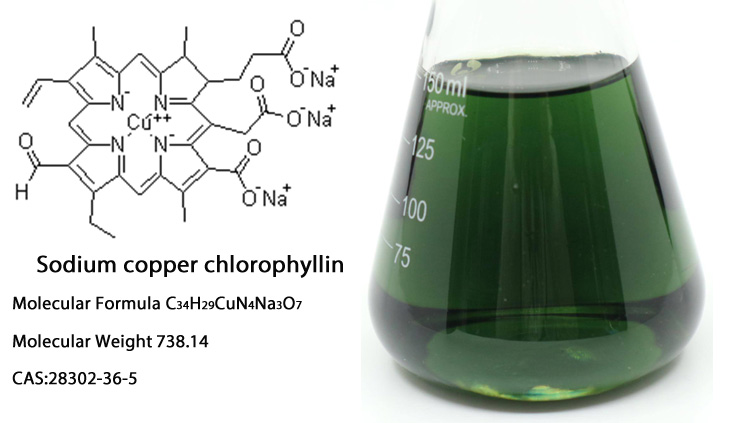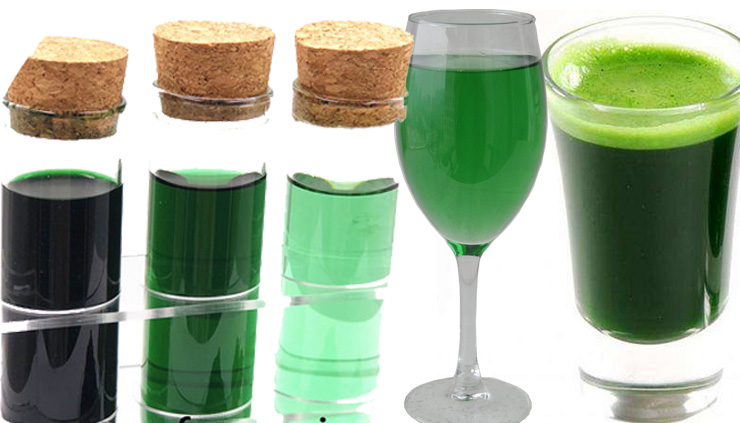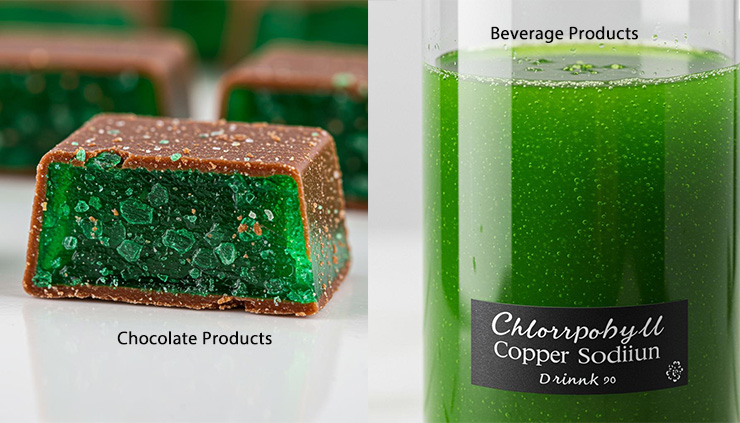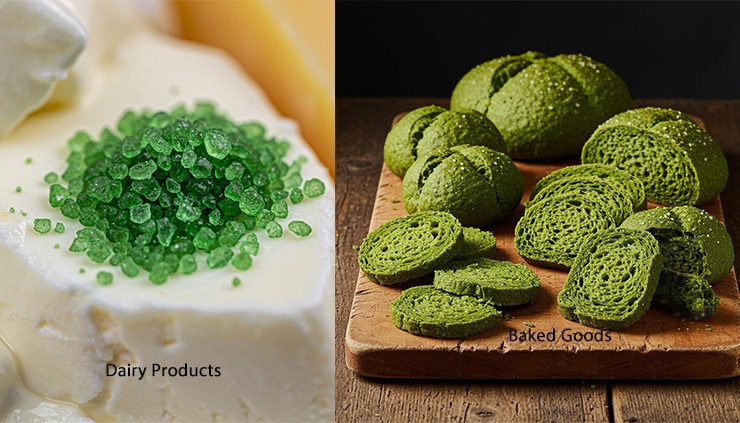Sodium Copper Chlorophyllin Overview: Natural chlorophyll is saponified and copper substituted to create sodium copper chlorophyllin, a natural pigment derivative. It is a globally renowned food colorant with a stable molecular structure, good water solubility, and light resistance (E141). Sodium copper chlorophyllin is frequently used in the food sector because it exhibits better durability than natural chlorophyll under high temperatures and acidic environments, with little fading.

Uses in the Food Sector
1. Chocolate and Confectionery Items
Sodium copper chlorophyllin is frequently used to give chocolate, chewing gum, and confectionery a consistent green color. It is especially common in mint candies and sweets with green tea flavors, where the product’s visual appeal is significantly enhanced by its natural green hue. Sodium copper chlorophyllin better satisfies the requirement for “clean-label” items from contemporary consumers than synthetic colorants.
2. Drinking Goods
Sodium copper chlorophyllin can be used to increase and modify green tones in fruit juices, sports drinks, and alcoholic beverages. For instance, it maintains a continuous green hue in green tea beverages by making up for the natural chlorophyll that is lost during processing. Its superior water solubility guarantees uniform dispersion in liquid products free from sedimentation.

3. Dairy Goods
Sodium copper chlorophyllin is frequently used as a coloring ingredient in dairy products such as cheese, yogurt, ice cream, and others. It gives a natural, gentle green tone without changing the flavor or texture of the food, especially in matcha-flavored or mint-flavored items that need to look green.
4. Pastries
The heat-resistant qualities of sodium copper chlorophyllin enable it to preserve color stability throughout baking in cakes, cookies, bread, and other baked goods. Matcha cakes, Christmas cookies, and other goods that need green decoration commonly use it.
Benefits and Security
Comparing sodium copper chlorophyllin to artificial green colorants reveals several benefits: First of all, because it is made from natural chlorophyll, consumers are more likely to accept it; second, it is more stable and is less affected by temperature, light, or pH; and third, just tiny amounts are required to produce the desired coloring effect.
Its use as a food additive has been assessed and approved by the European Food Safety Authority (EFSA) and the Joint FAO/WHO Expert Committee on Food Additives (JECFA). Its maximum usage limitations in different food categories are likewise specified by China’s GB 2760-2014 National Food Safety Standard.
Considerations for Usage
Despite sodium copper chlorophyllin’s high level of safety, the following should be kept in mind when using it:
1. Comply with the maximum amounts allowed for each food category.
2. Steer clear of using potent oxidizing chemicals at the same time.
3. Products that are excessively acidic may change color.
4. Keep containers well sealed and store in a cold, dry location.


Sodium copper chlorophyllin has a wide range of potential uses in the food business due to the rising demand from consumers for natural food additives. To increase market competitiveness, food manufacturers should prioritize informing consumers about the product’s natural origin and safety while simultaneously pursuing product aesthetics.







